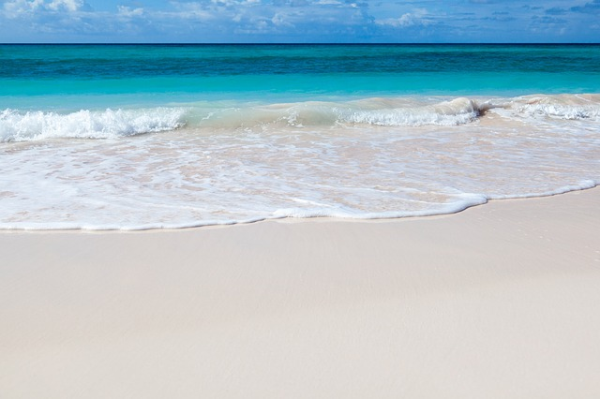
Ready to escape the frosty air and spend a few days in a tropical locale this winter? Before you relax, soak up the sun and let your guard down, don’t forget to take a few precautions to help you stay healthy during your trip:
Educate Yourself
When we picture ourselves soaking up the sun on an exotic island, it’s easy to forget that some of the most beautiful beaches in the world are located in countries with poor infrastructure. Plan accordingly by checking with your travel assistance provider or the CDC’s website for destination-specific health information (such as food and water safety) before you depart.
It also can’t hurt to visit sites like TripAdvisor and Lonely Planet for insights from fellow travelers on a wide range of travel health topics. While some of these insights can be taken with a grain of salt, you can often find interesting first-hand accounts that could help you avoid a potentially harmful situation.
Choose Your Water Wisely
Avoid swimming in rivers, lakes, ponds and streams. Well-chlorinated pools and salt water are usually your best bet. If access to potable drinking water is a concern (because you already did the research suggested in tip #1!) consider bringing water purification tablets with you and keeping them in your travel first aid kit. These tablets kill dangerous micro-organisms in water to prevent Cholera, Typhoid, Dysentery and other waterborne diseases.
And while we’re on the topic of water, don’t forget that sun exposure and alcohol don’t mix well. Heat and sun can intensify the effects of alcohol in the body and put you at higher risk for sicknesses such as dehydration and even alcohol poisoning.
Pack Some Repellant
Many tropical destinations are stomping grounds for insect-borne illnesses such as Malaria and Dengue Fever. In fact, the CDC warns that dengue is the most common cause of fever in travelers returning from the Caribbean, Central America and South Central Asia.
While the risks generally aren’t high enough to make you cancel your travel plans (any more than you would let your fear of Lyme Disease prevent you from visiting New England), wearing repellant that contains DEET (30%-50%), Picaridin (up to 15%), oil of lemon, eucalyptus/PMD or IR3535 is a good precautionary measure. Make sure to apply bug repellant after applying your sunscreen.
For those traveling with small children–the American Academy of Pediatrics approves the use of repellents with up to 30% DEET on children over two months old. For children less than two months old, consider using a carrier draped with mosquito netting with an elastic edge for a tight fit.
Wear Your Shoes
As good as it feels to let your toes run through the soft, warm sand, it’s important to keep your shoes on, especially when you’re moving. Nothing ruins a vacation like an annoying cut on your foot from a hidden piece of broken glass, sea shells or other sharp objects. If you do happen to get a cut, avoid the ocean–the bacteria that grow in the water can lead to an infection.
More incentive to wear shoes on the beach (preferably with good arch support): beach activities like walking, jogging, and volleyball can often lead to foot injuries. How can this be? The uneven surface of the sand makes feet and ankles more injury-prone. So before you hit the beach for your run, make sure to lace up.
Choose The Right Sunscreen
According to experts, shocking your body with intermittent, intense sun exposure is associated with a much higher melanoma risk than regular, everyday sun exposure. Back in the day, choosing a good sunscreen meant you looked for a high sun protection factor (SPF), but now research shows that you should also be concerned with UVA rays. While UVA rays don’t cause sunburns, they can penetrate deeply into the skin and cause wrinkles–in fact, The Environmental Protection Agency estimates that up to 90% of skin changes associated with aging are really caused by a lifetime’s exposure to UVA rays.
So what does this mean for us? Choose waterproof sunscreens SPF 30 or higher, with broad-spectrum or multi-spectrum protection for both UVB and UVA rays. Look for a sunscreen that contains at least one of the following: ecamsule, avobenzone, oxybenzone, titanium dioxide, sulisobenzone, or zinc oxide.
Application tips: apply two ounces of sunscreen (about a handful) to dry skin thirty minutes before exposure to the sun which allows time for it to absorb properly. Re-apply every two hours or immediately after swimming or activities that make you sweat. As mentioned earlier, sunscreen should be applied prior to insect repellant.
Plan For Good Health
Make sure to check your medical and travel insurance benefits before you leave. Many medical insurance carriers do not cover medical expenses outside of the United States and while some travel insurance plans offer medical evacuation coverage, they rarely allow you to choose evacuation to your home hospital close to your loved ones and in the care of your trusted physicians.
We hope these warm weather winter vacation tips were helpful! If you’re planning on taking a trip to a colder destination this winter, make sure to read our post: Cold Weather Travel Guide: Tips for Safe and Healthy Winter Fun.
Want even more winter travel health tips? Check out: Staying Healthy Before, During and After Your Winter Travels.


